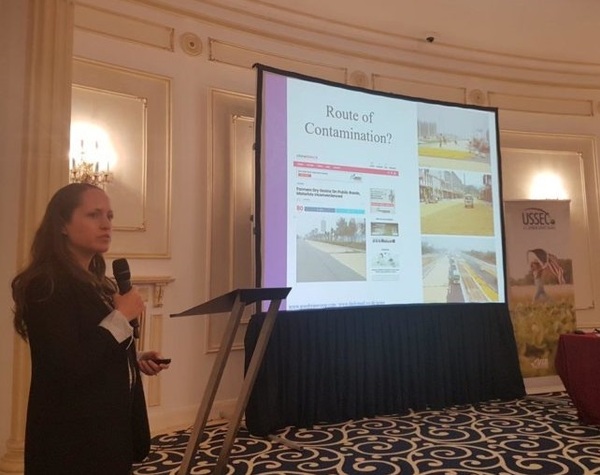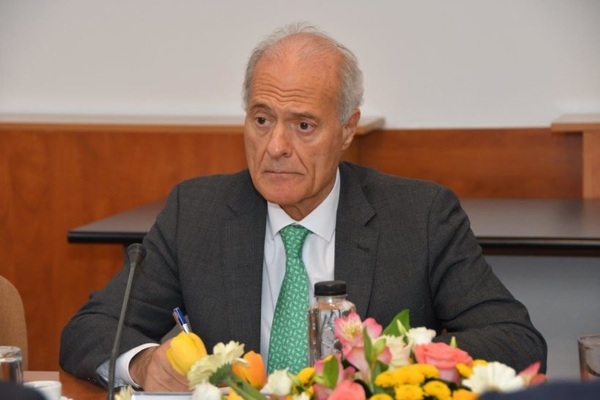USSEC assists east European swine industries in overcoming current transboundary disease outbreak challenges
Published: May 9, 2019
By: https://ussec.org/
In an effort to assist Eastern European customers in overcoming the current challenges faced by the local swine industry, USSEC invited world-renowned experts Dr. José Manuel Sánchez-Vizcaíno, Dr. Megan C. Niederwerder, Dr. Enrico Marco Granell and Dr. Gonzalo Mateos to share the most updated information on African Swine Fever Virus (ASFV). The subject matter experts also discussed strategies to prevent the spread of the disease and how to eventually eradicate it from the affected areas of Romania.
Hosted by the Romanian Feed Association (ANFNC) in Bucharest, Romania, the USSEC conference “Advances in Swine Nutrition and Diseases” took place on April 2. More than 60 participants from swine integrations, including U.S. soy customers from Romania, Bulgaria and Poland, attended.
The agenda covered key swine nutrition, biosecurity and swine disease-related subjects, which aimed to educate the specialists in charge of biosecurity at swine farms and feed mills. ASFV, the current threat to the world swine industry, was the central topic of this event. Recent outbreaks in East European countries have had a serious socioeconomic impact on the farming sector and are of major importance in the international trade of animals and animal products.
Biosecurity at the level of swine farms and feed mills and preventive measures to limit the spread of the disease through different vectors were presented by the keynote speakers, Dr. Niederwerder, Dr. Marco, and Dr. Vizcaino.

Megan Niederwerder
Dr. Niederwerder introduced the latest research from Kansas State University, which found that ASFV could survive in a simulated feed shipment across the ocean, which suggests that pathogens may potentially spread via feed.

José Manuel Sánchez-Vizcaíno
Dr. Sánchez-Vizcaíno, a world authority in ASFV, spoke about ways that ASFV could spread and infect animals, suggesting the implementation of strict control measures including biosecurity, culling of infected pigs, and reducing the wild boar population, which have managed to contain the spread of the disease in several regions thus far.
In addition to his presentation focusing on antibiotic-free swine production, Dr. Mateos emphasized the crucial role of soy and soy products and how they need to be used and regarded within the entire feeding context for antibiotic-free swine diets, focusing on the advantages of U.S. Soy.
Minister Daea and his team welcomed the USSEC delegation and key points of the implemented strategy to fight against the disease were discussed. Romania’s swine industry situation is complex, given its geography, as it borders countries continuing facing ASFV outbreaks that have different rules and regulations to fight the spread of the disease. Dr. Sanchez-Vizcaino suggested a set of particular measures to normalize the internal swine market and avoid damages for the local swine commercial production. He also volunteered to train a team of Romanian veterinarians who will be involved in Romania’s ASFV eradication at University Complutense Madrid, Spain. Dr. Vizcaino, emphasized the involvement of the authorities and the ability of the Romanian minister to have a comprehensive view of the virus, thanking him for understanding the importance of and addressing the ASFV issue.
Commercial swine production is an active market in Romania and the recent outbreaks of African swine fever took out of the market around twenty-five percent of the producing sows from commercial farms of the country. Producers are under heavy stress situation. Only competitive swine production units in which biosecurity will be ensured will keep on business. In short term, Romania has to reorganize its swine operations in order to arrive to be self-sufficient in pork meat. The abundant grain production allows Romania to be on the top three grain countries of the EU. However, the situation is different regarding the protein supply; oilseed needs to be imported. Even if currently suffering, the pig production in Romania has excellent opportunities ahead due to increase grain transformation to feed and later on to pork and poultry products to supply their own population as well as further export markets on UE and neighboring countries. Once reformed, the local swine sector will continue to be a key customer for the U.S. Soy.
Source
https://ussec.org/Related topics:
Authors:


Recommend
Comment
Share

Would you like to discuss another topic? Create a new post to engage with experts in the community.









